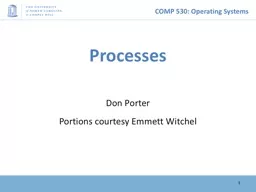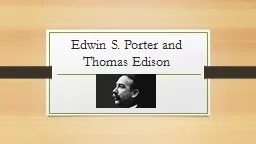PPT-Processes Don Porter Portions courtesy Emmett
Author : alexa-scheidler | Published Date : 2019-06-27
Witchel 1 App What is a process 2 2 Hardware Libraries Kernel User Super visor App Libraries Daemon Libraries System Call Table 3501200 Intuitively one of these
Presentation Embed Code
Download Presentation
Download Presentation The PPT/PDF document "Processes Don Porter Portions courtesy E..." is the property of its rightful owner. Permission is granted to download and print the materials on this website for personal, non-commercial use only, and to display it on your personal computer provided you do not modify the materials and that you retain all copyright notices contained in the materials. By downloading content from our website, you accept the terms of this agreement.
Processes Don Porter Portions courtesy Emmett: Transcript
Download Rules Of Document
"Processes Don Porter Portions courtesy Emmett"The content belongs to its owner. You may download and print it for personal use, without modification, and keep all copyright notices. By downloading, you agree to these terms.
Related Documents














